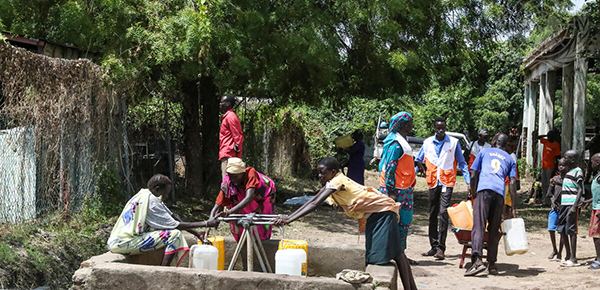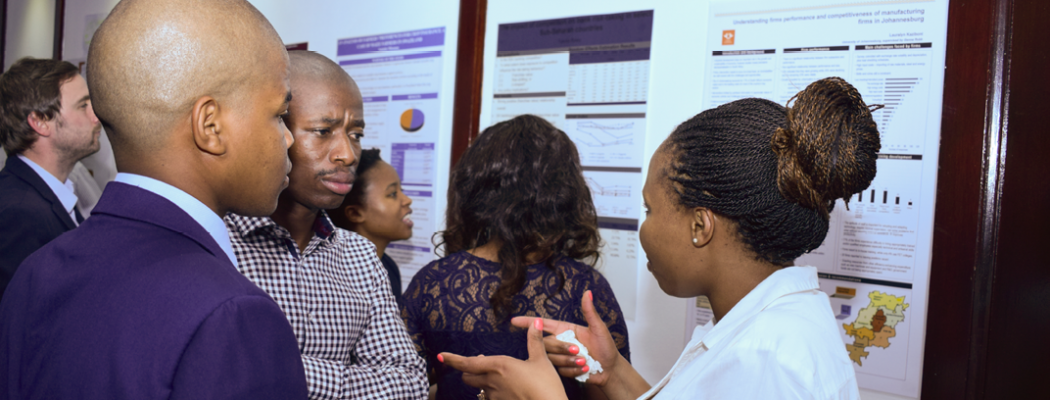Stunted growth, orphans, and access to sanitation services in South Africa
Stunted growth in early life has serious implications for cognitive development and is a well-established constraint to individual productivity and life expectancy. Vulnerability in childhood is highly correlated with stunted growth in many developing countries and is therefore a pressing concern.
Findings from a new dataset
In a recent WIDER Working Paper, I find that orphaned and vulnerable children (OVC) in South Africa are more likely to be stunted, but that this effect is completely mitigated by access to clean water in the home and adequate access to sanitation. Indeed, the data shows that access to water and sanitation is as important as household wealth in explaining stunting in children in South Africa.
Orphanhood and developmental outcomes
Internationally, the evidence that OVC are more likely to be stunted is mixed. In some developed countries, research suggests that orphans have adequate support to keep them from falling behind. But findings from developing countries document that OVC face greater socioeconomic disadvantages. In South Africa, orphaned children are more vulnerable to lower educational outcomes and, critically, more likely to live in rural, undeveloped areas with poor access to clean water and sanitation.

The evidence suggests that children who live in these areas are more likely to experience chronic diarrheal illness, which can lead to stunting.
Proper sanitation is of great concern for the health of children, especially for those who are more vulnerable to diarrheal illness. Lewin et al. (2007) estimate that the burden of disease in children under 5 due to inadequate sanitation and hygiene was 9.3% in 2000 in South Africa. More recent studies estimate widespread lack of sanitation in some areas to be among the top three causes of death for children under 5 in South Africa.
Moreover, while many children do not die from poor sanitation, early childhood stunting can still cause lasting damage. Multiple studies link lower life outcomes with stunted growth in childhood, including increased morbidity, poor cognitive development and worse educational outcomes, increased risk of perinatal and neonatal death in stunted women, lower productivity, and reduced earnings potential.
A new dataset
To investigate the relationships between vulnerability in childhood, access to sanitation, and stunting, a dataset has been constructed which allows for the estimation of the effect of service provision on child health outcomes, and specifically stunted growth. In particular, the research focuses on the orphan stunting penalty; that is, the higher likelihood that orphaned children will live in high-risk areas and experience a higher likelihood of stunted growth.
This analysis brings information together from multiple publicly available data sources, focused on OVC and service provision in South Africa (referred to as the data on Orphaned and Vulnerable Children in South Africa (OVCSA)). In compiling the data, I took each electoral ward in South Africa as the unit of observation. This Geographic Information System (GIS) data collection technique allows for multiple sources to be linked for a unique spatial analysis of orphanhood, child health outcomes, and service provision, as well as inequalities in these measures. The sources used to create the OVCSA dataset include the 2011 South African Community Census, the 2013/14 Audit of Early Childhood Development (ECD) facilities in South Africa, a comprehensive geospatial estimation of Child Growth Failure (CGF) in South Africa by Osgood-Zimmerman et al. (2018), and multiple publicly available lists of government facilities which include the locations of health facilities, police stations, South African Social Security Agency (SASSA) offices and Department of Social Development (DSD) service points.
The key to unlocking children’s full potential
The working paper evaluates the relative contributions of household resources and public service delivery to reducing the orphan stunting penalty in South Africa. The results indicate that a network of public sanitation (i.e., widespread access to flush toilets) and piped water in the home are at least as important as private household wealth in reducing this penalty. Access to other public services does not play a similarly important role.
Importantly, the results indicate that public infrastructure affects stunting with spatial network effects. In areas where there are spatial agglomerations of sanitation, the mitigating effects are stronger. Co-ordination of services and economies of scale over large regions, as well as regional herd immunity in stopping the spread of diarrheal illness among children, could play important roles in providing lasting solutions to stunting more generally and orphan vulnerability in particular.
By contrast, proximity to other social services, such as health facilities, cash transfer payment centres, and early childhood development centres, does not alter the stunting profile of orphans and other children to the same extent. These network effects remain important over and above the effect of living in an urban area. The implication of these results is that long-run health gains for OVC could more likely be achieved through prioritising infrastructure investment rather than health and social services directly. This evidence is crucial as a case study in understanding how best to care for vulnerable children, and allow them to reach their full potential, both physically and mentally.
These results imply that it is possible for the government to tangibly address orphan stunting, thereby supporting some of the most vulnerable South Africans. To my knowledge, no other study suggests such a tangible way to support orphans and reduce the likelihood they experience poor health outcomes. Finally, this analysis can be interpreted as a case study, where the findings and conclusions are likely to be applicable in other developing countries.

